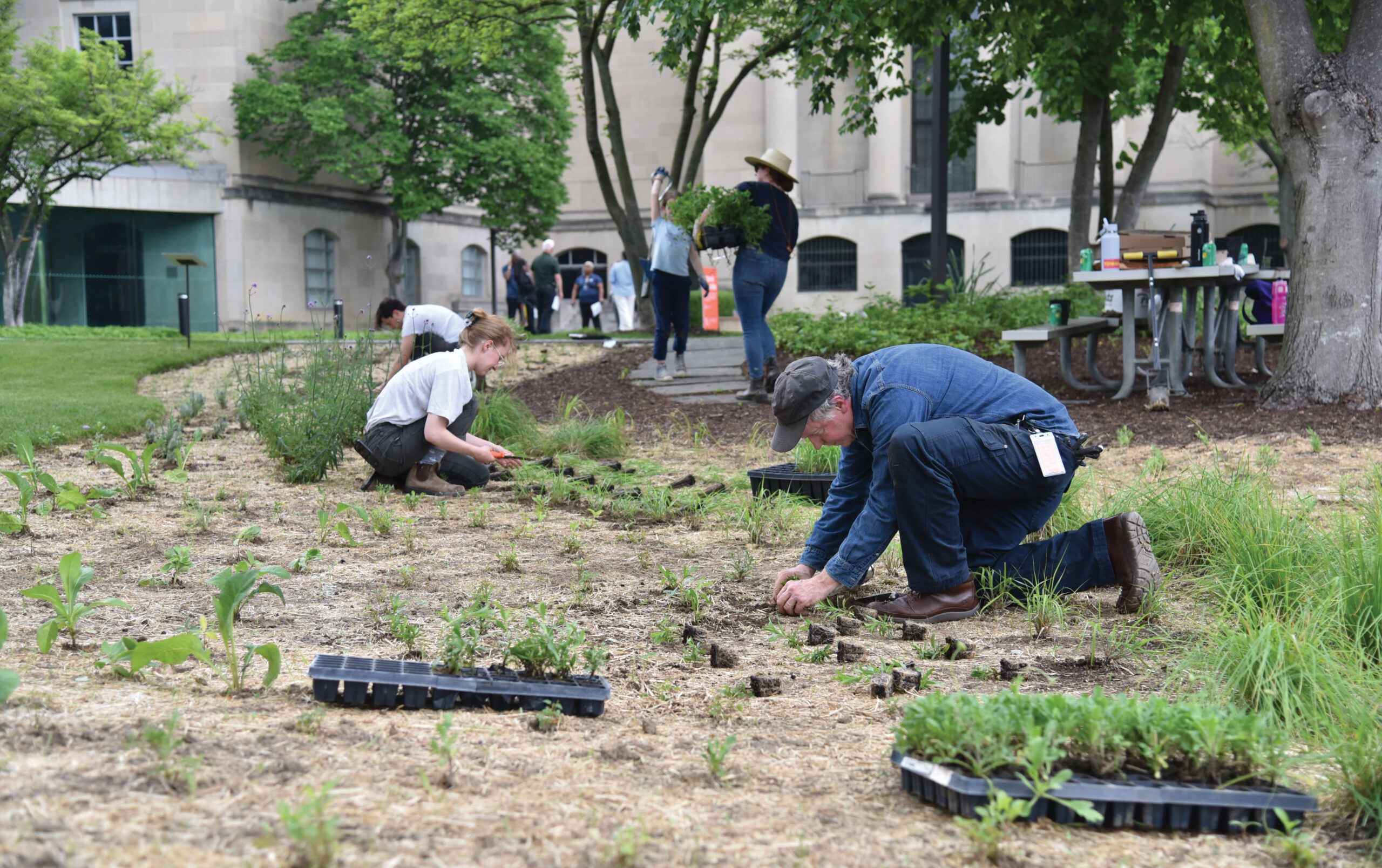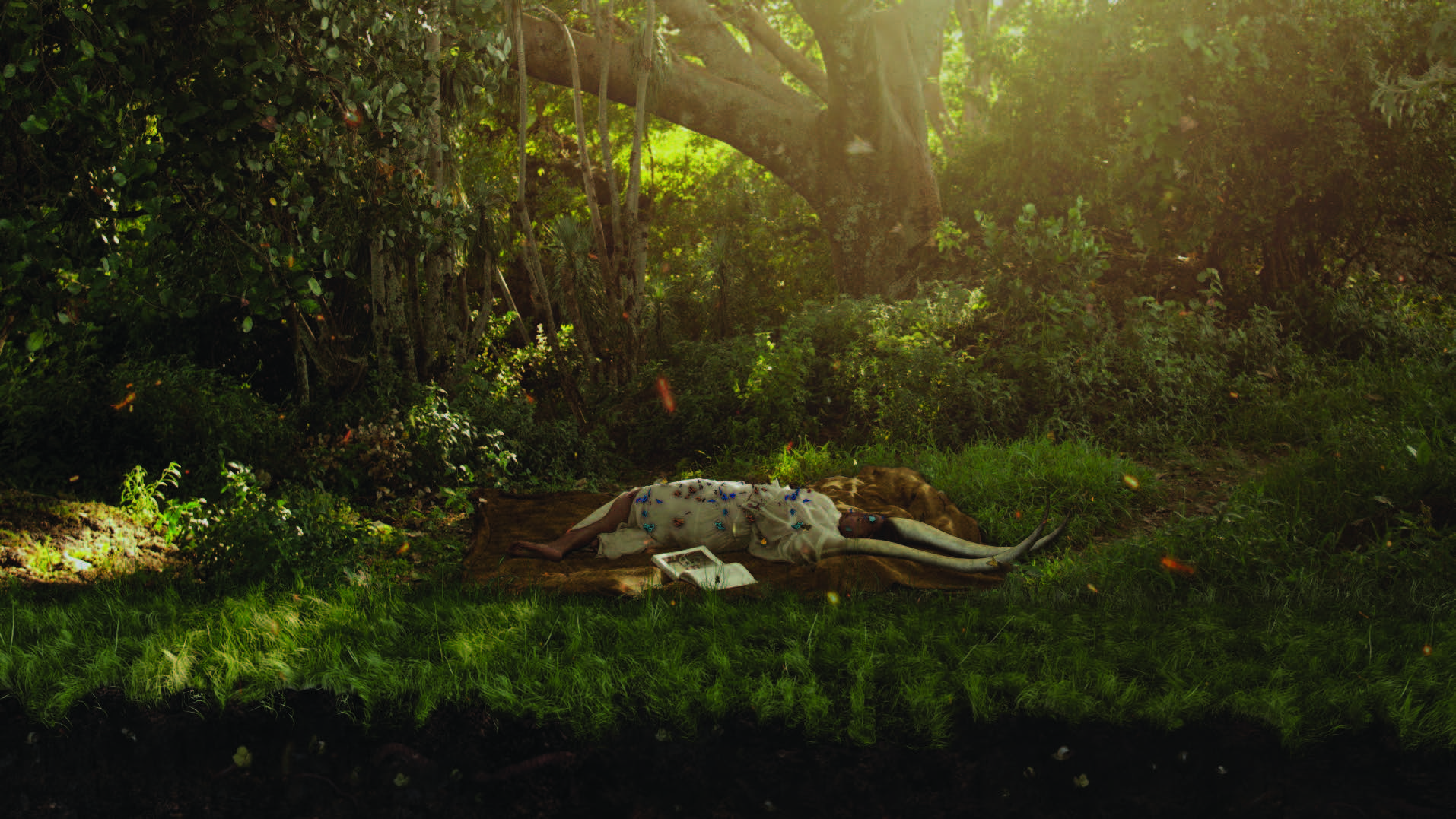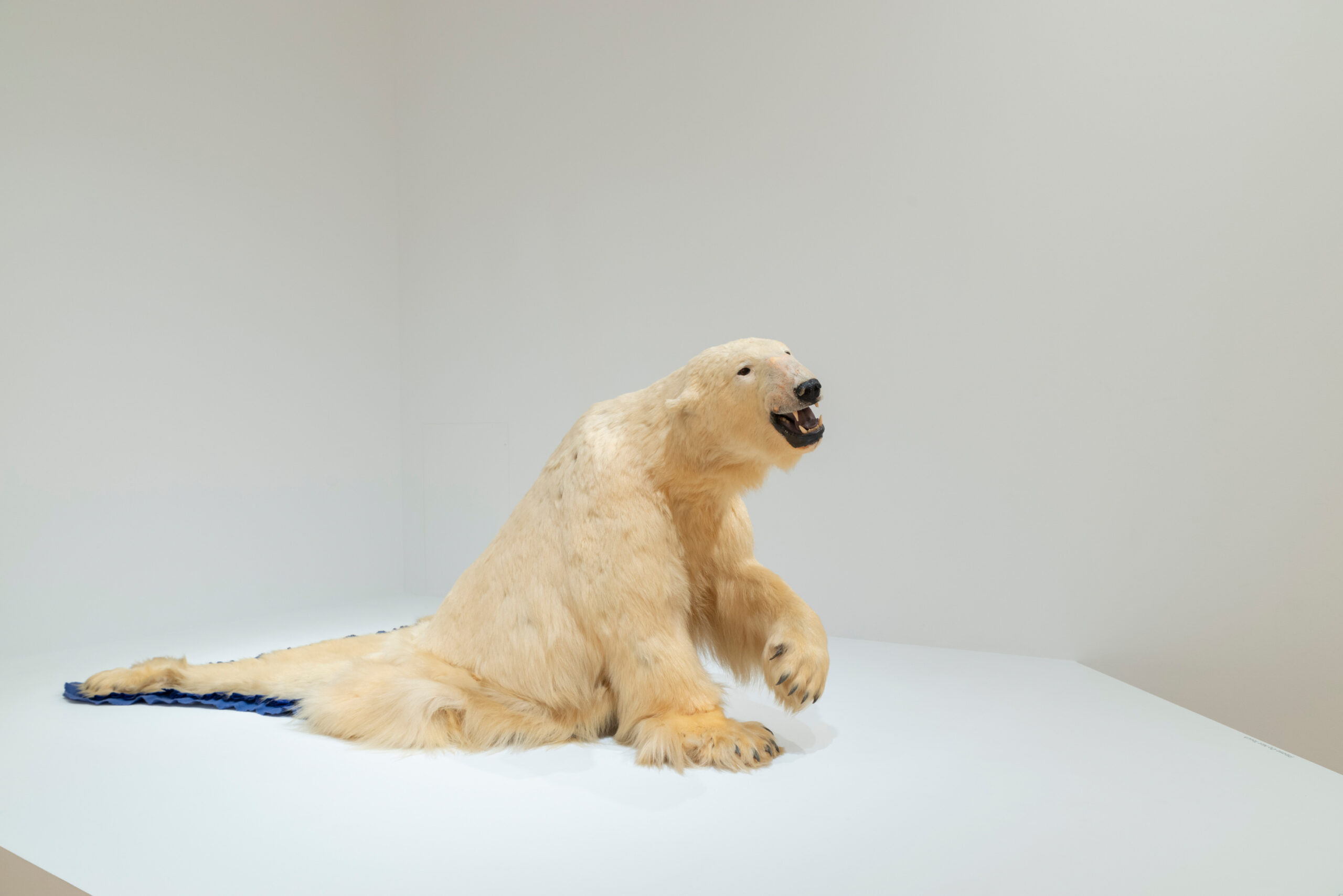
When you step into the BMA’s Contemporary Wing and look left, sparkling stars might catch your eye.
Look closely at the work featuring the stars and you’ll notice the sparkle is actually a cluster of shimmering glass beads, metallic buttons, and strips of tulle stitched into a night sky illuminating Harriet Tubman’s path across the Combahee River in South Carolina.
This scene, titled We Shall Pass through the Combahee, is part of artist Stephen Towns’ latest story quilt series narrating key moments in the storied abolitionist’s life.
In one quilt, Towns explores Tubman’s youth when she was hit in the head by an overseer with a 2-pound weight, causing a lifetime of health complications and vivid dreams. Another references her role as a conductor of the Underground Railroad.
Born into slavery on Maryland’s Eastern Shore, Harriet Tubman is well-known for guiding hundreds of enslaved people to freedom. What’s little known, however, is her work as a women’s suffrage ally and as a nurse, cook, and spy for the Union Army during the Civil War, which is where the story in Towns’ quilt—on view in Every Day: Selections from the Collection—begins.
Towns says his interest in Tubman’s life piqued as talk circulated around the possibility of her likeness being placed on the $20 bill. Further reading helped him uncover a deeper history that intersected with his own upbringing in South Carolina.
“I found Tubman just a fascinating person,” he said. “She’s almost like a superhero. I started reading about her in Ann Petry’s book, ‘Harriet Tubman: Conductor on the Underground Railroad.’ Because I’m a South Carolina native, this particular story was of importance because I didn’t know about it when I lived there.”
I have a political agenda of telling the story of Tubman and telling how important she is in American history, just like Leutze had an agenda creating this sort of mythological image of Washington.
Artist Stephen Towns
The story goes that from 1862 to 1864, Tubman spent time in the coastal region of Beaufort County, SC, where she worked in hospitals and encouraged black entrepreneurship as a member of the New England Freedmen’s Aid Society. On June 1, 1863, she participated in a raid led by Col. James Montgomery alongside a unit of nearly 300 mostly black men that resulted in the destruction of Confederate rice fields and the liberation of more than 700 enslaved people. At the raid’s end, Tubman gave a rousing speech that inspired 150 freed men to join the Union Army.
While the specifics of Tubman’s involvement in South Carolina are lost to history, Towns chose to commemorate this moment as a teaching tool, a map guiding viewers down a path of discovery much like his own.
“I want my art works almost to be seen like monuments where you see something spectacular and you want to know what’s the story behind that,” Towns said. “If [visitors] see this work, they’ll start finding a story and they’ll start finding out about Tubman.”

Lessons on Tubman will ultimately prompt lessons on how history is remembered and told. Towns modeled We Shall Pass through the Combahee after Emanuel Leutze’s 1851 painting, Washington Crossing the Delaware, which famously depicts George Washington crossing the Delaware River during the American Revolutionary War. This painting—a symbol of strength and power—has been recreated and revered since its creation despite known historical inaccuracies.
Towns followed this tradition, deliberately shaping his own image of American history with a new champion at the helm: Harriet Tubman.
“I have a political agenda of telling the story of Tubman and telling how important she is in American history, just like Leutze had an agenda creating this sort of mythological image of Washington,” he said. “None of those [historical inaccuracies] matter because what you’re doing is conveying a feeling.”
We Shall Pass through the Combahee is on view in Every Day: Selections from the Collection in the BMA’s Contemporary Wing through January 5, 2020.




